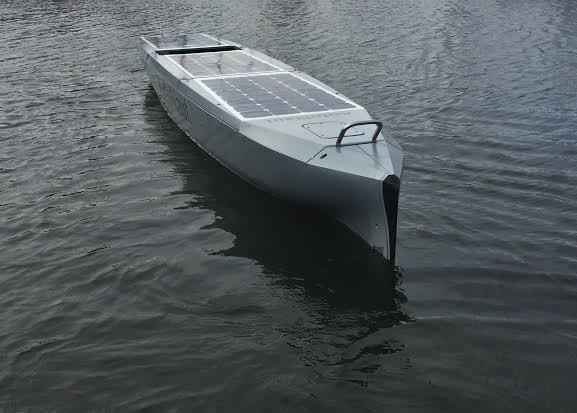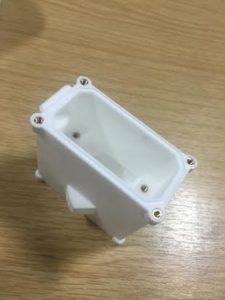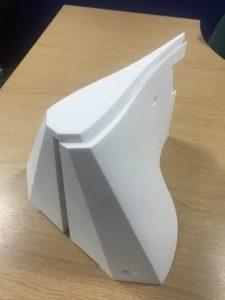The AutoNaut: Ogle Models Produces 3D Printed Bow & Tail Fin Design for Weather Data Collecting Sea Drone
 While many of us often doubt the actual efficacy of those giving weather reports, the meteorologist of today is certainly well-supplied with technology. Because as much accuracy as possible is truly required due to storms or weather issues that could endanger lives, weather organizations and governments around the world are always exploring new ways to gauge the weather, as well as giving reports to the public in an accelerated fashion. We’ve seen the National Oceanic and Atmospheric Administration using 4D software as well as 3D printed weather stations being used in Zambia. employing a range of methods that most of us have never considered and may not have even heard of.
While many of us often doubt the actual efficacy of those giving weather reports, the meteorologist of today is certainly well-supplied with technology. Because as much accuracy as possible is truly required due to storms or weather issues that could endanger lives, weather organizations and governments around the world are always exploring new ways to gauge the weather, as well as giving reports to the public in an accelerated fashion. We’ve seen the National Oceanic and Atmospheric Administration using 4D software as well as 3D printed weather stations being used in Zambia. employing a range of methods that most of us have never considered and may not have even heard of.
Now, the UK is looking into further methods for monitoring the ocean to produce accurate weather predictions in the future and MOST Autonomous Vessels (AV) hired Ogle Models to help with a portion of the project in outfitting a super sea drone. Headquartered in Hertfordshire, Ogle was asked to 3D print prototype parts for a remote-controlled drone, called the AutoNaut, that could be used at sea. This would allow for a whole new realm of study in comparison to conventional ocean mapping and marine biology studies.
 Ogle’s part was to make both a complex bow and tail fin design for the oceanic drone—also known as an unmanned surface vessel or USV—which requires absolute precision. Employing laser sintering (SLS), Ogle relied on what is one of the most precise 3D printing technologies, using a laser to trace the 3D model across a powder bed, melting and binding the material together to form a strong, solid shape.
Ogle’s part was to make both a complex bow and tail fin design for the oceanic drone—also known as an unmanned surface vessel or USV—which requires absolute precision. Employing laser sintering (SLS), Ogle relied on what is one of the most precise 3D printing technologies, using a laser to trace the 3D model across a powder bed, melting and binding the material together to form a strong, solid shape.
Once 3D printed, the parts made by the Ogle team were rigorously tested, as it was imperative—more than ever, in this case—that the surface finish was not just completely accurate, but also able to handle ocean conditions.
“The material and production process also needed to guarantee that the final part would be non-porous which meant the model could be tested accurately,” stated the Ogle team in a recent press release.
“We are extremely proud to have been selected to produce these parts for the MOST Autonomous Vessels (AV), the leading innovator of autonomous drones. The company’s products have become so integral to research and understanding more about our oceans.”
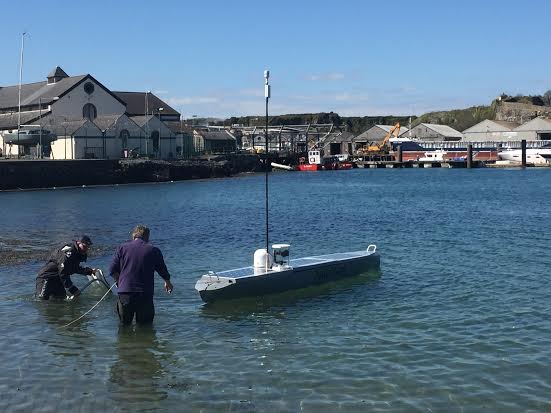 Ogle has worked with MOST AV before on other projects, but this, according to Dan Alldis, Design Manager at MOST, was the largest job they have worked on together. Ogle’s prices for 3D printing were found to be competitive for the task at hand, and the MOST AV team was impressed with their lineup of machines and tools.
Ogle has worked with MOST AV before on other projects, but this, according to Dan Alldis, Design Manager at MOST, was the largest job they have worked on together. Ogle’s prices for 3D printing were found to be competitive for the task at hand, and the MOST AV team was impressed with their lineup of machines and tools.
“They have led the way in 3D printing for years, building a very impressive portfolio,” said Alldis. “It made sense to work with the experienced team at Ogle for this project. We have an order going through for three more parts since the completion of the bow and tail fins, and would not hesitate to work with them on future projects.”
Already in the water, drones such as the AutoNaut will undoubtedly change many traditional methods for gathering data, aside from meteorology. Technology like this is a great example of how we are now able to perform exercises that simply weren’t possible previously.
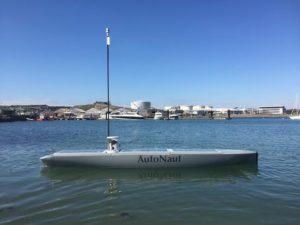 Just finishing a four-day trial from Plymouth, UK, carrying Met Office sensors, the AutoNaut has so far been a success, testing the viability of this concept in attaining weather and forecasting data. This should prove to be a more streamlined process, as well as more affordable. Not only that, with the use of 3D printed parts and prototypes, edits are easier to make to the design should they be required as development continues.
Just finishing a four-day trial from Plymouth, UK, carrying Met Office sensors, the AutoNaut has so far been a success, testing the viability of this concept in attaining weather and forecasting data. This should prove to be a more streamlined process, as well as more affordable. Not only that, with the use of 3D printed parts and prototypes, edits are easier to make to the design should they be required as development continues.
The Ogle team sees a bright future for the use of drones, offering a ‘priceless resource’ to numerous industries as they are manufactured in volume and used around the world for a multitude of tasks in gathering data, many of which may have been previously impossible. Discuss further in the 3D Printed Sea Drone forum over at 3DPB.com.
[Source: Ogle Models; All images provided to 3D Print.com directly from Ogle Models]Subscribe to Our Email Newsletter
Stay up-to-date on all the latest news from the 3D printing industry and receive information and offers from third party vendors.
Print Services
Upload your 3D Models and get them printed quickly and efficiently.
You May Also Like
Consolidation in AM: How 2025 Is Shaping the Industry’s New Normal
The first half of 2025 has been marked by a clear shift in the additive manufacturing (AM) industry. Companies are no longer just focused on developing new tech by themselves....
Etsy Design Rule Change Reduces Selection of 3D Printed Goods
Online marketplace Etsy has implemented a rule change requiring all 3D printed goods on the site to be original designs. The update to the site’s Creativity Standards states, ¨Items produced using...
U.S. Congress Calls Out 3D Printing in Proposal for Commercial Reserve Manufacturing Network
Last week, the U.S. House of Representatives’ Appropriations Committee moved the FY 2026 defense bill forward to the House floor. Included in the legislation is a $131 million proposal for...
Transforming From Tourist to Native: Duro CEO Michael Corr Explains Why the Company Rebuilt its PLM Software on AI
In these early innings of the AI boom, many market analysts have expressed concern that AI spend has gotten too far ahead of the technology’s proven ability to deliver significant...


